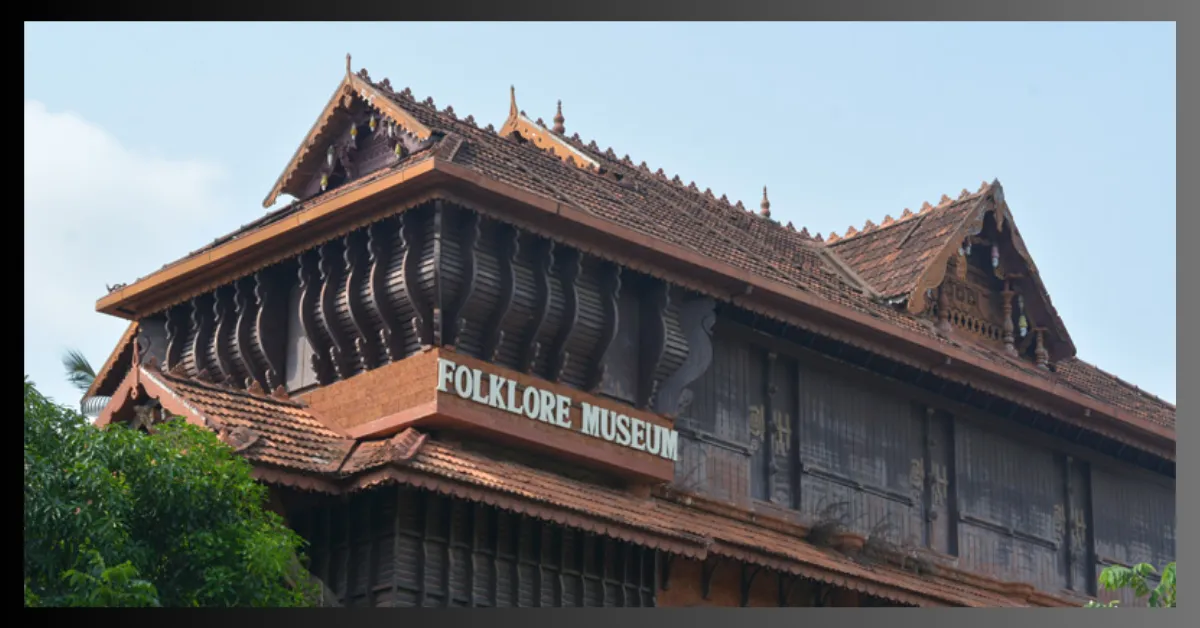Folklore Museum Mysore: Entry Fee and Timings

Mysore, a city known for its rich cultural heritage, is home to one of the most fascinating destinations for anyone interested in folklore and traditional Indian art – the Folklore Museum. Located within the sprawling University of Mysore campus, this museum offers visitors a glimpse into India’s vast cultural tapestry. It houses a variety of artifacts, each telling a story of the country’s vibrant traditions, especially from the southern states. If you’re planning a visit, here’s everything you need to know about the Folklore Museum in Mysore, including entry fees, timings, and much more.
Overview of the Folklore Museum
The Folklore Museum in Mysore was established in 1968, with the purpose of preserving and showcasing India’s traditional folk culture. It features an impressive collection of over 6,500 exhibits, which include folk art, puppets, costumes, musical instruments, weapons, ceramics, and more. The museum is particularly renowned for its collection of Yakshagana costumes and puppets, as well as the intricately carved wooden figures that are iconic to traditional Indian folklore.
What to Expect at the Folklore Museum
Visitors to the Folklore Museum can expect to see a wide array of exhibits that represent the cultural diversity of India, with a focus on South Indian traditions. Some of the most notable sections of the museum include:
- Folk Art Gallery: This section features traditional paintings, sculptures, and craftwork from various parts of India. The craftsmanship on display is a testimony to the artistry and skill of rural artisans.
- Folk Music and Dance: Instruments such as the Nadaswaram (a traditional wind instrument), Mridangam, and Dholak are on display here, along with an in-depth look at South Indian dance forms like Yakshagana and Karakattam.
- Puppetry and Masks: This gallery showcases puppets used in traditional puppet shows and masks worn in dance and theater performances, particularly from Karnataka and other southern states.
- Costumes and Jewelry: An extensive display of traditional costumes worn in folk dances and festivals, including Yakshagana attire, along with tribal jewelry that illustrates the intricacies of ancient Indian metalwork.
Entry Fee for Folklore Museum Mysore
When planning a visit to the Folklore Museum, it’s important to be aware of the entry fees. As of the latest update, the museum charges a nominal fee for admission:
- Indian Nationals: INR 15 per person
- Foreign Nationals: INR 25 per person
- Children (Below 10 years): Free entry
The entry fee is incredibly affordable, making it accessible to people from all walks of life. It’s a small price to pay to experience the vast cultural heritage that the museum preserves.
Timings of Folklore Museum Mysore
The museum operates on specific timings, so it’s important to plan your visit accordingly. The Folklore Museum Mysore is open to the public on the following schedule:
- Monday to Saturday: 10:30 AM – 5:00 PM
- Closed on Sundays and Public Holidays
Since the museum remains closed on Sundays and public holidays, it’s advisable to plan your visit on a weekday to avoid any disappointment. The museum’s opening hours allow for a leisurely visit, ensuring you have plenty of time to explore all the exhibits without feeling rushed.
Best Time to Visit Folklore Museum Mysore
While the museum is open year-round, the best time to visit is during the winter months, from October to February. The weather in Mysore during these months is cool and pleasant, making it easier to explore the city and its attractions. If you’re planning a broader trip to Mysore, this time of year is ideal for visiting other iconic landmarks like the Mysore Palace, Chamundi Hills, and the Brindavan Gardens.
How to Reach Folklore Museum Mysore
The Folklore Museum is conveniently located within the Manasagangotri campus of the University of Mysore, which is easily accessible by both public and private transport.
- By Bus: Mysore has an efficient public transport system, and several buses connect the city center with the University of Mysore campus. Buses are frequent and affordable.
- By Auto Rickshaw: Auto rickshaws are another convenient way to reach the museum. They are available across the city and provide a quick way to get to your destination.
- By Car: If you’re traveling by car, the museum is located about 4 km from Mysore Railway Station and approximately 12 km from Mysore Airport. Parking is available on the campus.
Exploring Other Attractions in Mysore
Mysore is known for its palatial architecture, vibrant festivals, and rich history. While the Folklore Museum is a must-visit for anyone interested in Indian culture, there are plenty of other attractions in the city that are worth exploring:
- Mysore Palace: This iconic structure is one of the most visited tourist attractions in India. The palace is known for its grand architecture, with influences from Hindu, Mughal, Rajput, and Gothic styles.
- Chamundi Hill: Located on the outskirts of Mysore, Chamundi Hill is a popular pilgrimage site with a temple dedicated to Goddess Chamundeshwari.
- Brindavan Gardens: Famous for its musical fountain shows, the Brindavan Gardens are located near the Krishna Raja Sagara Dam and are a popular spot for families and tourists.
- St. Philomena’s Church: This neo-Gothic style church is one of the largest in India and a stunning architectural marvel that should not be missed.
Conclusion
The Folklore Museum Mysore is an essential stop for anyone interested in the history, culture, and traditions of India, especially those of South India. With its extensive collection of artifacts, including costumes, puppets, musical instruments, and folk art, the museum offers a fascinating insight into India’s rich folk traditions. Whether you’re a history buff, a cultural enthusiast, or simply a curious traveler, the museum promises an enriching experience.
Entry fees are minimal, and with convenient timings that allow for a relaxed visit, it is an accessible and worthwhile destination in Mysore. Don’t miss the chance to explore this treasure trove of culture and heritage on your next visit to the city.
Hello, My Name is sanjay kumar. I am a student and traveler. I love to explore the gardens beauty. Just want to provide information and guide about Brindavan Gardens. Thankyou.
